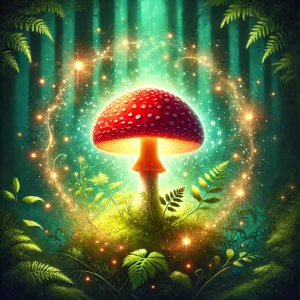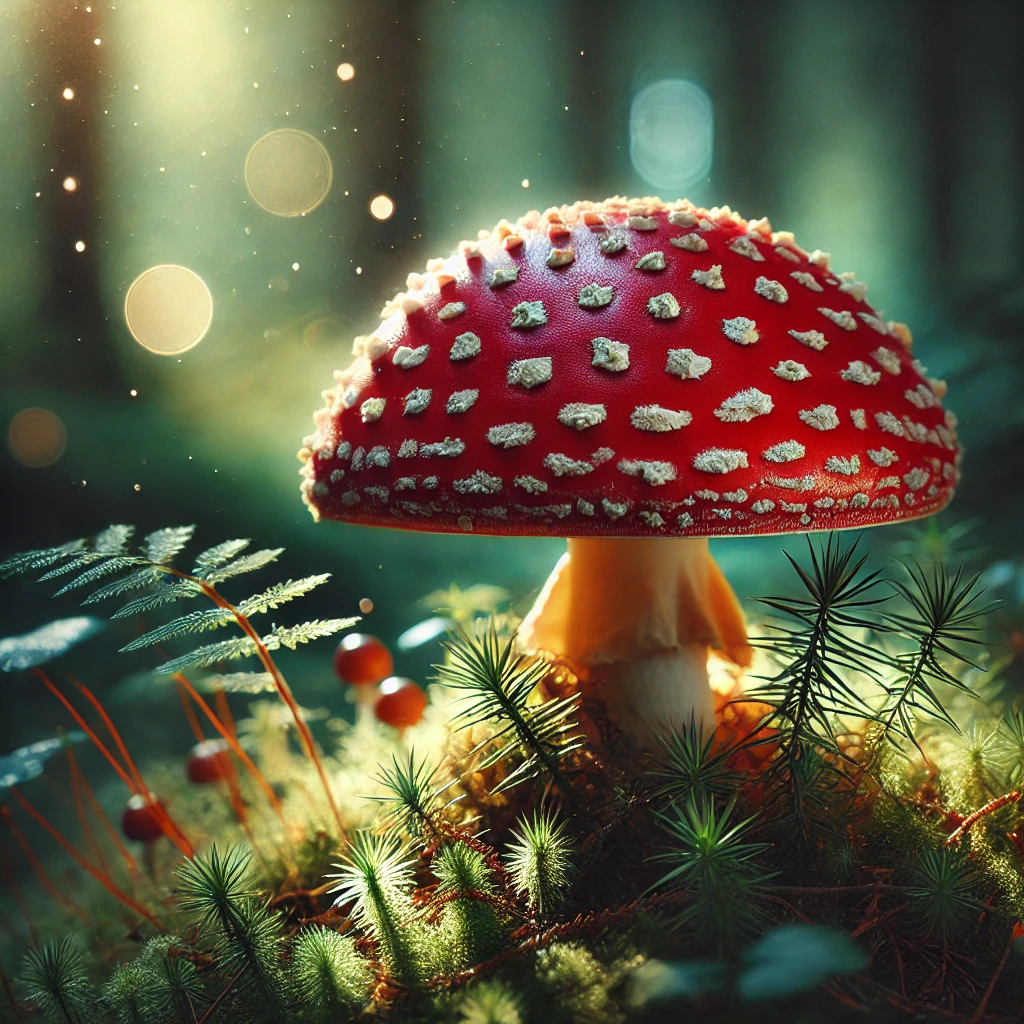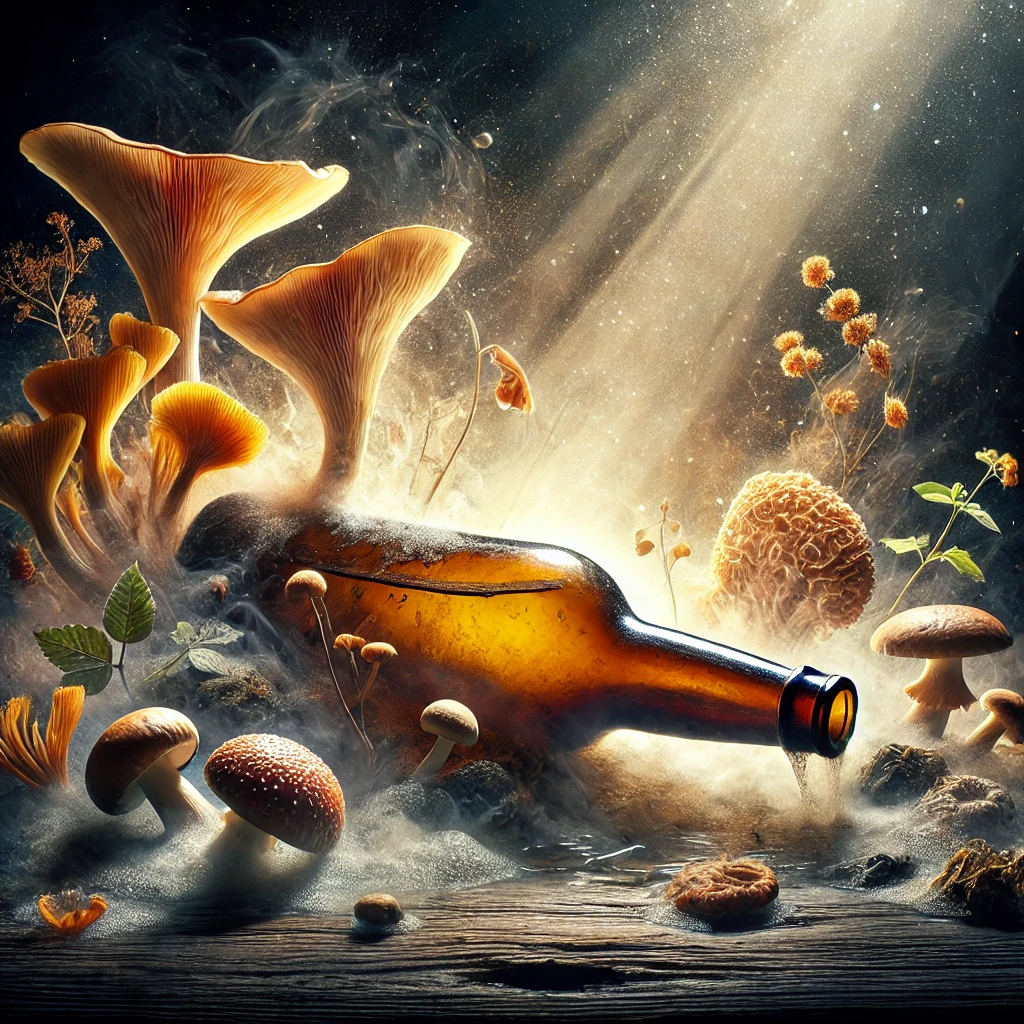Introduction: The mystical magic of the fly agaric
The fly agaric (Amanita muscaria) has been an integral part of many cultural rituals and myths for centuries. Long before it became known as a symbol of fairy tales and legends, the fly agaric was of crucial importance in traditional medicine and shamanic practices. Its connection to our modern-day Christmas traditions is particularly fascinating. In this article, we explore the origins of this connection and delve deep into the history and ritual use of the fly agaric.
For those who are curious and want to explore the potential of this extraordinary mushroom, we recommend a visit to our store, where you will find everything you need to safely and thoroughly immerse yourself in the world of the fly agaric.
1. origin and mythology of the fly agaric in Nordic culture
The beginning of a shamanic tradition
The history of the fly agaric begins in the icy expanses of northern Europe and Siberia, where shamanic traditions were strongly influenced by the effects of this mushroom. Shamans in these cultures used the fly agaric to enter a trance-like state and communicate with the spirits and forces of nature. These rituals often took place at the winter solstice, a time of great spiritual significance for the Nordic peoples.
The shamans traditionally wore red robes with white dots, which were modeled on the appearance of the fly agaric. This symbolic connection between the mushroom and this magical time of year laid the foundations for many of our Christmas symbols today. They gathered the mushrooms and hung them on the branches of conifers to dry – an image that later became part of the tradition of decorating the Christmas tree.
The ritual use of the fly agaric
Before the ceremony, the fly agaric was often dried to enhance its psychoactive effects. The shamans and their followers ate small amounts of the mushroom or gave it to reindeer, which also consumed it and became unusually lively afterwards. It was said that by consuming the fly agaric, the reindeer experienced the sensation of flying – an idea that later became part of the legend of Santa Claus and his flying reindeer.
These visions and trance-like states enabled the shamans to symbolically travel through the “cosmic tree” – a concept that later found its way into our traditions in the form of the Christmas tree. The tree symbolized the connection between heaven and earth, and the mushrooms that grew on its branches were considered gifts from the gods.
2. the Christmas tree and its connection to the toadstool
The Christmas tree as a symbol of the cosmic tree
The Christmas tree as we know it today has deep roots in pagan culture and in the rituals of the ancient Nordic peoples. In these cultures, the conifer was a symbol of life and fertility that remained green even in the depths of winter. Shamans hung toadstools on the branches of these trees to harness their healing and mind-expanding powers.
The tradition of drying fly agarics
After harvesting, the fly agarics were often dried over the fire to concentrate and activate their psychoactive substances. This led to the practice of hanging them in socks or stockings to dry over the fire – a custom that was later reflected in the tradition of Christmas stockings hung over the fireplace.
These dried toadstools were then eaten during special ceremonies or regarded as sacred objects to summon the guardian spirits and nature beings. The tree on which the mushrooms were hung symbolized the cosmic tree or Yggdrasil, the tree of life in Norse mythology, which connected heaven and earth.
3. the frenzy of reindeer: toadstools and the legend of Santa Claus
The flying of the reindeer – A vision from the mushroom rush
The idea of flying reindeer pulling Santa Claus through the sky may have originated in the behavior of Siberian reindeer, which are known for their penchant for consuming toadstools. When the reindeer ate the mushroom, they exhibited strikingly animated behavior that looked like flying or hopping – a scene that inspired the shamanic rituals and visions of shamans.
These visions of flying animals and magical journeys formed the basis for today’s legend of Santa Claus, who flies through the night sky with his reindeer to distribute presents. The toadstool became the symbolic propulsion for this mystical journey, symbolizing the transition between worlds.
The shaman as a role model for Santa Claus
Santa Claus, as we know him today, has many characteristics that can be traced back to the practices of Nordic shamans. His red robe with white decorations is strongly reminiscent of the toadstool, and his journey down the chimney could be due to the tradition of shamans climbing through the smoke hole into the yurts of their villages to distribute dried toadstools.
4. the use of the fly agaric at Christmas time
Ceremonies and rituals with the fly agaric
The use of the fly agaric in ritual ceremonies at Christmas time had a deep spiritual and cultural background. It was believed that the mushroom would help people to penetrate the veils of reality and reach a higher spiritual level. During these ceremonies, stories were told about gods, spirits and the wonders of nature, which brought the community closer together.
Participants used dried fly agarics, which were either eaten directly or boiled in drinks to enhance the psychedelic effects. These practices led to deep trance-like states that were considered sacred and transformative.
Effect and significance of the fly agaric in the rituals
The active ingredients of the fly agaric, mainly muscimol and ibotenic acid, led to strong changes in perception and consciousness. The rituals often revolved around visions of lights illuminating the night sky, which was later interpreted as the origin of the tradition of Christmas lights.
5 The influence of the fly agaric on today’s Christmas tradition
Santa Claus and his magical properties
Many of our modern customs around Christmas have their origins in the ancient myths and rituals associated with the fly agaric. Santa’s magical ability to deliver presents overnight and enter homes through the chimney could be traced back to shamanic rituals and the magical effect of the fly agaric.
Why do we decorate the Christmas tree?
The Christmas tree as we know it today is a direct carryover of the tradition of placing toadstools on conifers to harness their magical powers. The red and white baubles that we hang on the tree today are strongly reminiscent of the image of the toadstool and its connection to the spiritual customs of the winter solstice.
Conclusion: The magic of the fly agaric lives on in our Christmas traditions
The connection between Christmas and the fly agaric is much more than a fairy tale – it is a deeply rooted cultural heritage that has had a lasting influence on our modern customs. From the shamanic rituals of Siberia to the symbolic colors of Santa Claus and the Christmas tree, the fly agaric is omnipresent in today’s conception of Christmas.
For those who want to explore the magic and effects of the fly agaric, we offer a wide range of products for safe scientific research in our store. Be inspired by the fascinating stories and spiritual secrets of the fly agaric and discover its powers for your own journey.
Immerse yourself in the ancient magic of the fly agaric and discover the true meaning of Christmas magic!




